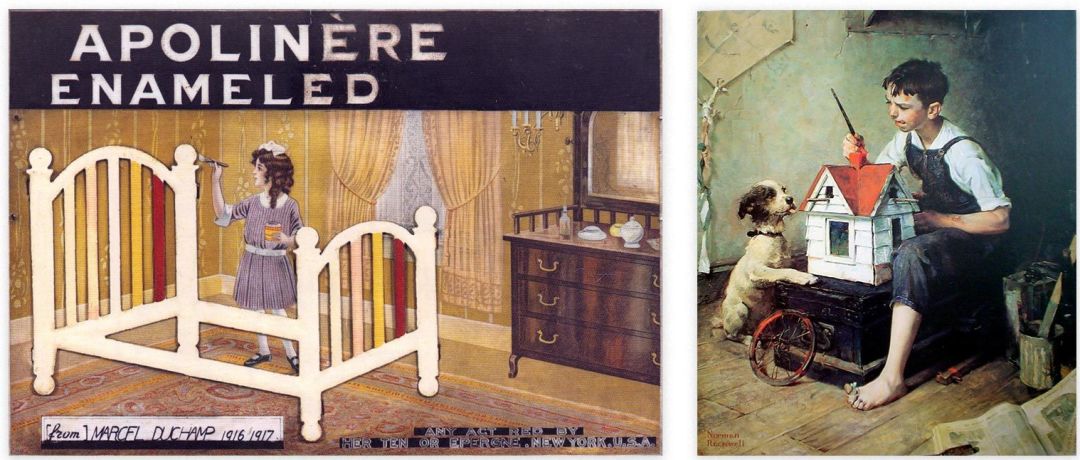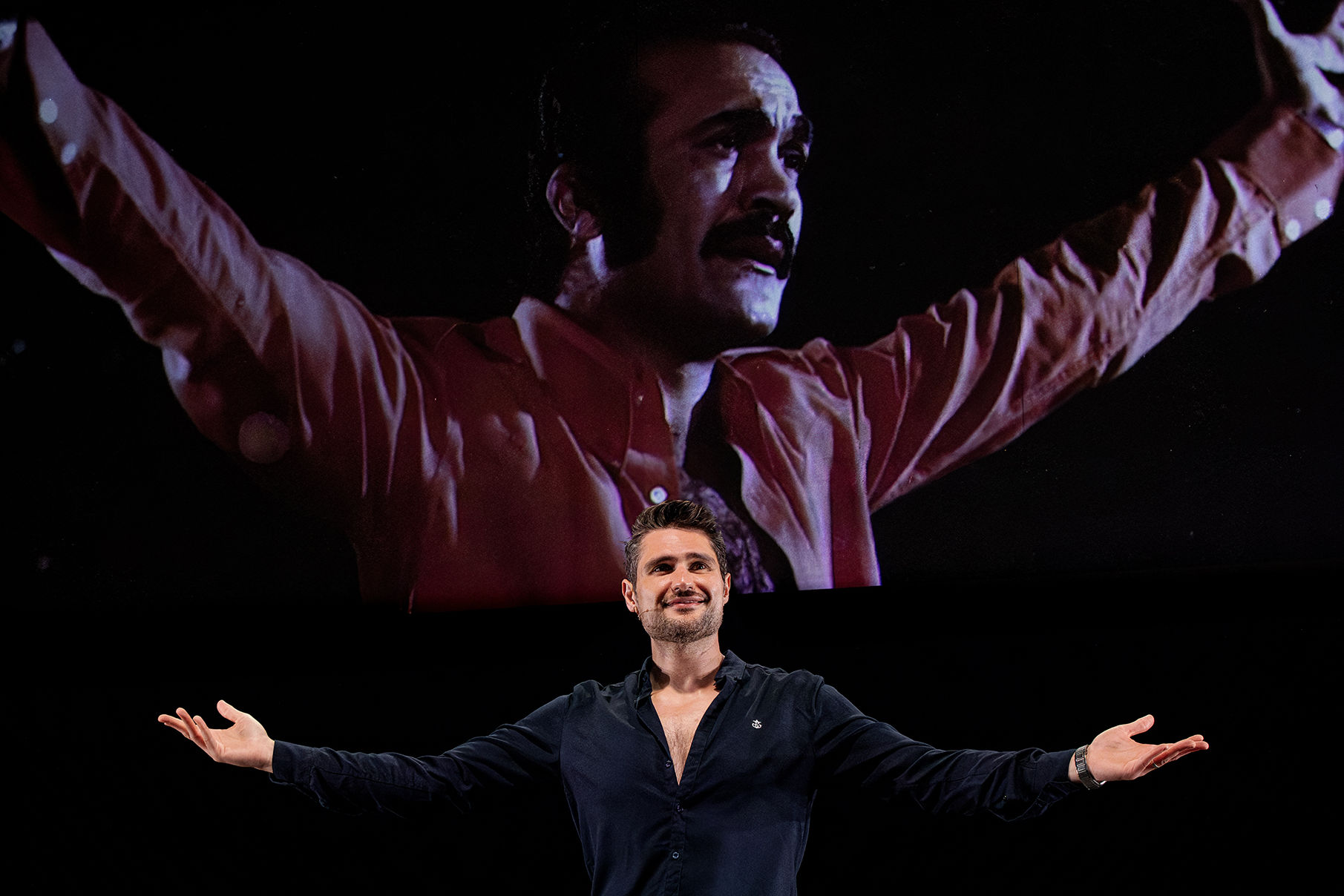What 100 Paintings Say about the Past 100 Years

Left: a 1917 work by Marcel Duchamp. Right: from a 1921 Norman Rockwell work.
Image: Courtesy PICA
If you were to look back at the paintings produced over the past 100 years, what would they tell you? How would you select the best, the most interesting, the ones you most want to talk about or record or remember?
New York-based critic and curator Bob Nickas took on just such a challenge last year, and he upped the ante: He decided not only to choose 100 paintings, but to select just one from each year, gathering them in an order that led to surprises, even for himself. The result, 100 Paintings / 100 Years, is presented at PICA on Monday, November 7, with Nickas discussing his selections.
We caught up with Nickas ahead to find out about why he thinks we need to challenge art history, what he learned, and what he left out.
What prompted you to take on this project?
I was asked to choose 100 images of paintings for a talk at the Bruce High Quality Foundation free school. I like the idea of a free school that is not necessarily run by academics. There were no specific instructions for the selection. Altogether they asked 10 different people, mostly artists, to present these talks. In the end, there would be an archive of 1,000 images. I like to raise the difficulty level of this sort of thing, so I decided to choose the 100 images in chronological order and since we were in 2015 at the time, that meant the span would be 1915 to 2015. 1915 as a starting point means that you begin with the monochrome and the readymade, and almost all art comes from there in one way or another, whether rejected or embraced.
Tell us about your selective process: how did you make your decisions?
As quickly and intuitively as possible. I wanted to call up artists and artworks in a free-associative way and see where that led, then seeing where the dates placed the individual works. And as one led to another, I found myself playing a kind of game of exquisite corpse. Each image followed in surprising ways, even to myself. I did not want in any way to follow a prescribed or known and accepted narrative of art. The last hundred years has allowed in recent time for a re-shuffling of the deck.
What does the collection demonstrate about art over the past 100 years to you? Is there a traceable arc through these pieces?
All art is made at every moment in time. The market, magazines, gallery and museum exhibitions give a narrow view of what's happening, and thus what we think we should be looking at, and art history, which is supposed to tell the story of what really happened should not enable that sort of self-serving narrative. But in recent years the gap between art history and publicity seems closer than ever. We shouldn't contribute to that, but counter that. Art history shouldn't be rushed along just to sell things that won't end up in the history books yet to be written.
According to the press release about your talk, there were some controversial omissions, perhaps as telling as the inclusions. Can you talk about those?
I just didn't see the point of including every big name that you automatically find in the giant-sized story of art book on the coffee table, or in every school and museum store. Gerhard Richter is supposedly the greatest living painter. There is no Richter painting in my talk. Originally there was one, but I switched it out for a painting by Martin Wong, titled Heaven.
Did this project in any way change your perspective on recent art history?
I often use the art of the past to criticize the art of the present, that's in many ways what it's there for. But recent art history really isn't history yet. It's a story that's still unfolding and we don't know really, it's happening around us now. This sounds flip, but it's true: time will tell.
In terms of the present day and contemporary art production, to whom should we be paying the most attention, in your opinion? Who are the artists currently working that most interest you?
The best way to answer that is to mention a few of the artists we encounter towards the end of the list of 100 paintings: Sadie Benning, Kelley Walker, Sascha Braunig, Stanley Whitney, Xylor Jane, and Charline Von Heyl.
100 Paintings / 100 Years takes place at PICA at 6:30 p.m. Monday, November 7.




